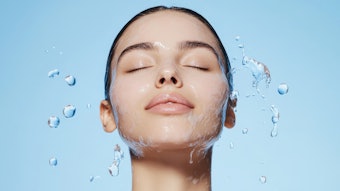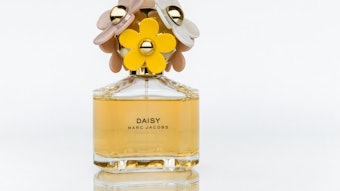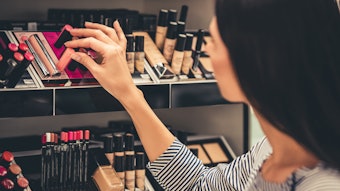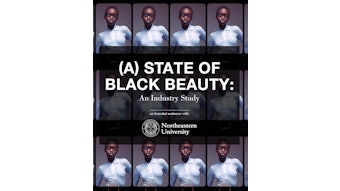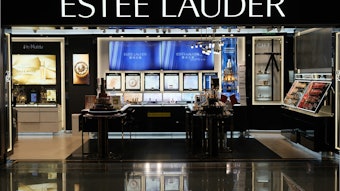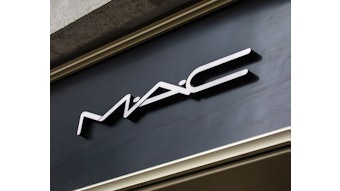
- Social media has become a big presence in beauty marketing, but turning “likes” into sales isn’t as easy or straightforward as it seems.
- The ability to find brand advocates through detailed product purchase data research and then helping them to get the word about a brand/product is likely the surest way to gain new brand fans. And campaign-based advocacy requires four main steps: targeting, engaging, activating and measuring.
- Your beauty brand already has advocates, so taking the time to strategically build upon and amplify their foundational support will build a more powerful—and more lucrative—brand.
When Estée Lauder started selling skin care in Queens, New York, one of her mottoes was “Tell-a-Phone, Tell-A-Graph, Tell-A-Woman.” This echoed her belief in the power of a glowing review from one customer to another.
Beauty consumers have always shared candid opinions about brands with family, friends and whoever else will listen. In fact, category enthusiasts have been sharing their product reviews from the earliest days of the Internet, from the first cosmetics-related threads on the Usenet newsgroup alt.fashion in the 1990s to the beauty blogs and forums available today. Marketers have long known that customer advocacy can boost a brand in ways carefully crafted ads can’t—and that negative word of mouth, in turn, can do real damage.
Social media has turned consumers’ opinions of brands into an open conversation, and beauty brands can actively participate. But even among their strongest advocates, it has been easier for brands to generate “likes” than to drive sales. Further, digital tools haven’t been able to track and measure the majority of consumer discussions that happen offline.
But now, by harnessing smart data and analysis, marketers can understand how online and offline advocacy contributes to sales, as well as how to foster advocacy in a systematic way. Beauty companies can finally leverage a consumer’s natural emotional bond with brands and convert it to actual sales rather than just intangible “goodwill.”
More Than Skin Deep
Before trying to use advocacy as a sales tool, beauty marketers need to understand how much brand champions contribute to current sales in an organic way. What are they saying? Who are they telling? How much does it affect sales? That’s where customer data comes into play.
Built on a robust database of purchase behavior and a panel of shoppers active in social media, data, when carefully analyzed, can show a brand:
- who its best customers are,
- what customers are saying about the brand,
- whom they influence,
- and how many sales result.
In a recent dunnhumby study, analysts identified all of the buyers of a particular shampoo. A subsequent survey identified a sample of purchasers as either people who recommended the shampoo to others (advocates), people who learned about the product from an advocate (advocate-influenced) or people who did neither (unexposed). Although advocates comprised little more than 10% of the purchaser group in the study, they exerted a strong influence on the brand’s sales. A detailed analysis, including weighting for variables such as demographics, revealed that over the course of three months, 17.5% of sales were advocate-influenced. More than one out of every six purchases of the brand came from people who only learned of the product from a friend.
Small Group, Big Voice
Advocates already have a major impact on a beauty brand’s sales, even if marketers do nothing to encourage it. Research revealed advocates create more buyers—and more valuable ones—who spend more than unexposed purchasers. Consumers who were recommended a product spent more than twice as much on the product than those who hadn’t been exposed to a recommendation.
Most advocacy occurs outside of digital channels. More than 60% of the advocate-influenced group received recommendations in verbal discussions (face-to-face, phone, etc.). Reviews, both in digital and print, accounted for about 10% of all recommendations. And Facebook, the biggest digital channel, accounted for fewer than 10% of all recommendations.
In repeated examples, both advocacy and sales have been improved with a campaign-based approach. This differs greatly from more common types of social media marketing, where branded Facebook pages, Twitter feeds and blogger outreach can support goals of increasing brand engagement. Those results are typically measured by “likes” or other social network actions. Well-run social media marketing often succeeds in these soft measures, but rarely involves any tie to actual sales.
Advocacy for ROI
Traditional social media marketing focuses on engagement, but re-tweets don’t ring up at the register. Campaign-based advocacy can help beauty marketers track the recommendation path to sales, and involves four main actions:
1. Target: Find the right mix of potential advocates based on a combination of previous purchase behaviors, demographics and social influence scores. Beauty marketers should look beyond the generic “moms aged 25–49” or “females aged 15 and older” and instead identify consumers who actively use the brand or a similar product.
This requires access to detailed shopper data and analytics that help recognize and segment just the right consumers who have the potential to become strong advocates.
2. Engage: Let participants experience the product on their own time (and terms) so they can form trustworthy opinions. Samples, offers and educational materials all help potential advocates form their own thoughts, creating credibility and giving useful feedback to the brand.
This requires hands-on product experience, education and a well-designed set of shareable materials that give clear direction without inducing bias.
3. Activate: Provide conversation starters and suggest actions like sharing videos of the product in use, posting a review on a retail site, or hosting a party to share the product with friends. The more natural and fun the suggested activities feel, the more likely that advocates will embrace them. This requires knowing how to motivate advocates. For instance, a nail polish range that lends itself to sharing and experimentation would make a good basis for a party; a skin care line probably would not.
4. Measure: Collect and analyze detailed reports from advocates to understand what they did, and track results from any offers distributed. Conduct market mix modeling or matched market tests (test vs. control markets) to determine sales lift and ROI.
This requires robust sales data and strong, sophisticated analysis for valuable insights you can trust.
Repeat Business and Lasting Love
When marketers deployed an advocacy campaign in one of two similar markets, sales increased 8% in the advocacy market relative to the non-advocacy (i.e. control) market. And after advocates try and advocate a product, they often repurchase it. The repeat rate can also rise based on granularity of targeting: Advocates targeted by demographics alone (e.g. 25- to 49-year-old moms) repurchase at a rate of 15%. But advocates who used the product prior to the campaign repurchase at a rate more than twice as high: 32%.
This research also shows that each advocate in a campaign shares the brand conversation with an average of 200 people by social media and 74 people by offline communication. Recipients of these discussions then share the brand story across their own personal networks.
Additionally, half of the sales gain generated by the campaign in this study was sustained six months later. So six months after a campaign lifts sales by an average of 8%, that brand could still be enjoying a 4% lift in sales.
The Beautiful Bottom Line
Research results clearly show advocacy can stand on its own two feet as a legitimate strategic marketing tool. Beauty marketers can plan advocacy the same way they plan ad campaigns or direct marketing. Better yet, they can attain meaningful results in terms of sales and insights about their customer audiences.
Your beauty brand already enjoys support from advocates, whether you encourage them or not. Taking the time to strategically build upon and amplify their foundational support will build a more powerful—and more lucrative—brand.
Ben Cesare brings more than 25 years of marketing experience to dunnhumby after leading and building teams at companies like Apple and Psion, Inc. As CEO of Invoke Solutions, he grew and operated a company delivering online qualitative and quantitative research to some of the largest brands in the global market. Now at dunnhumby, Cesare has worked with some of the world’s most iconic global beauty brands to develop and execute ROI-driving advocacy strategies.
